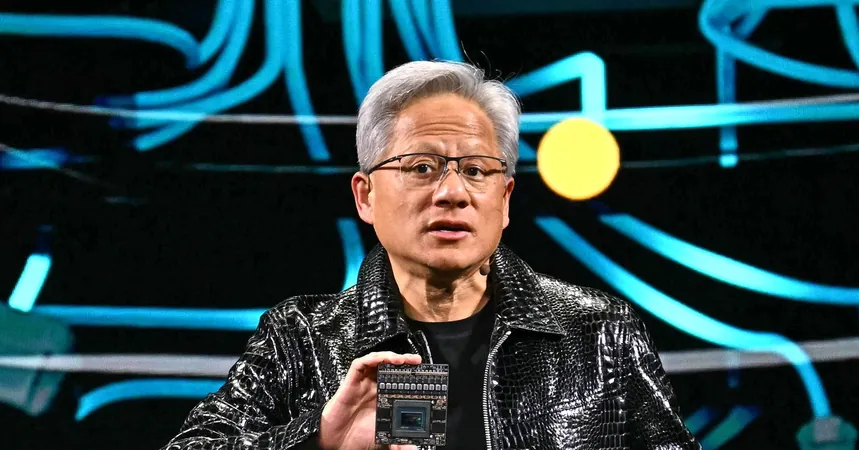
Nvidia Unveils Revolutionary 'Cosmos' AI to Enable Humanoid Robots to Conquer the Real World
2025-01-07
Author: Jia
Nvidia's Groundbreaking Announcement at CES
In a groundbreaking announcement at the prestigious CES conference in Las Vegas, Nvidia revealed its latest innovation: a family of foundational AI models called Cosmos. These advanced models are set to empower humanoid robots, industrial machinery, and self-driving vehicles with enhanced abilities to navigate and interact within the physical world. Unlike traditional language models that are trained on a vast array of text data, Cosmos focuses on generating high-fidelity images and 3D models, enabling machines to become adept at understanding their environments.
Showcase by CEO Jensen Huang
Nvidia CEO Jensen Huang took center stage to showcase the impressive capabilities of Cosmos. By utilizing an astonishing 20 million hours of real-life footage depicting human movements and interactions—such as walking and handling objects—Nvidia has trained AI systems that can simulate various scenarios. As Jensen emphasized, “It’s not about generating creative content but teaching the AI to analyze and comprehend the dynamics of the physical realm.
Implications of Cosmos Technology
The implications of this technology are vast and exciting. Researchers and innovative startups are eager to leverage these foundational models to equip robots with sophisticated functionalities. For instance, Cosmos can produce realistic simulations of scenarios like boxes tumbling from shelves in warehouses. This feature will aid in training robots to recognize and respond to accidents, making them more adept and responsive in real-world settings. Moreover, developers can customize the models by incorporating their own data to further refine performance.
Industry Adoption of Cosmos
Several prominent companies have already begun to integrate Cosmos into their operations. Startups such as Agility and Figure AI, known for their humanoid robots, alongside self-driving car ventures like Uber, Waabi, and Wayve, are at the forefront of this technological shift. Their enthusiasm for Cosmos showcases the growing demand for intelligent robotics in various sectors.
New Software Enhancements
In addition to the Cosmos models, Nvidia announced new software enhancements aimed at streamlining the learning process for robots. This feature, a part of the existing Isaac robot simulation platform, allows engineers to provide a limited number of examples for specific tasks—like grasping items—and the AI will generate extensive synthetic training datasets to refine these skills efficiently.
Conclusion: The Future of Humanoid Robotics
As the era of humanoid robotics approaches, Nvidia envisions Cosmos and the Isaac platform playing pivotal roles in attracting companies seeking to develop next-generation robotic solutions. At CES, attendees were captivated by the life-sized representations of 14 humanoid robots, which were developed by leading figures in the field, including Tesla, Boston Dynamics, Agility, and Figure.
The future of AI-powered humanoid robots is arriving faster than expected—are we ready to welcome our new robotic counterparts into daily life? Stay tuned as Nvidia and its partners continue to reshape the landscape of robotics!



 Brasil (PT)
Brasil (PT)
 Canada (EN)
Canada (EN)
 Chile (ES)
Chile (ES)
 Česko (CS)
Česko (CS)
 대한민국 (KO)
대한민국 (KO)
 España (ES)
España (ES)
 France (FR)
France (FR)
 Hong Kong (EN)
Hong Kong (EN)
 Italia (IT)
Italia (IT)
 日本 (JA)
日本 (JA)
 Magyarország (HU)
Magyarország (HU)
 Norge (NO)
Norge (NO)
 Polska (PL)
Polska (PL)
 Schweiz (DE)
Schweiz (DE)
 Singapore (EN)
Singapore (EN)
 Sverige (SV)
Sverige (SV)
 Suomi (FI)
Suomi (FI)
 Türkiye (TR)
Türkiye (TR)
 الإمارات العربية المتحدة (AR)
الإمارات العربية المتحدة (AR)